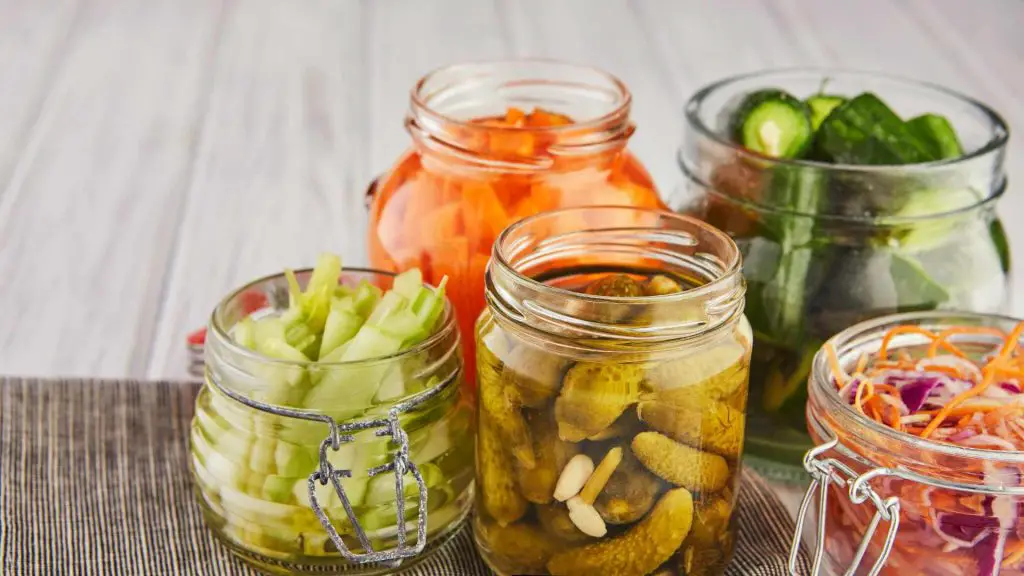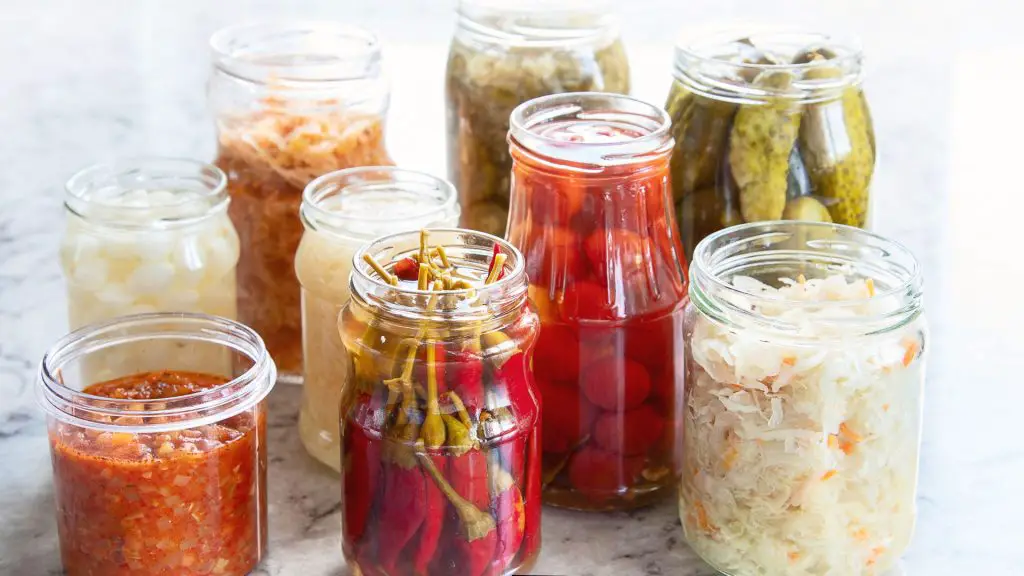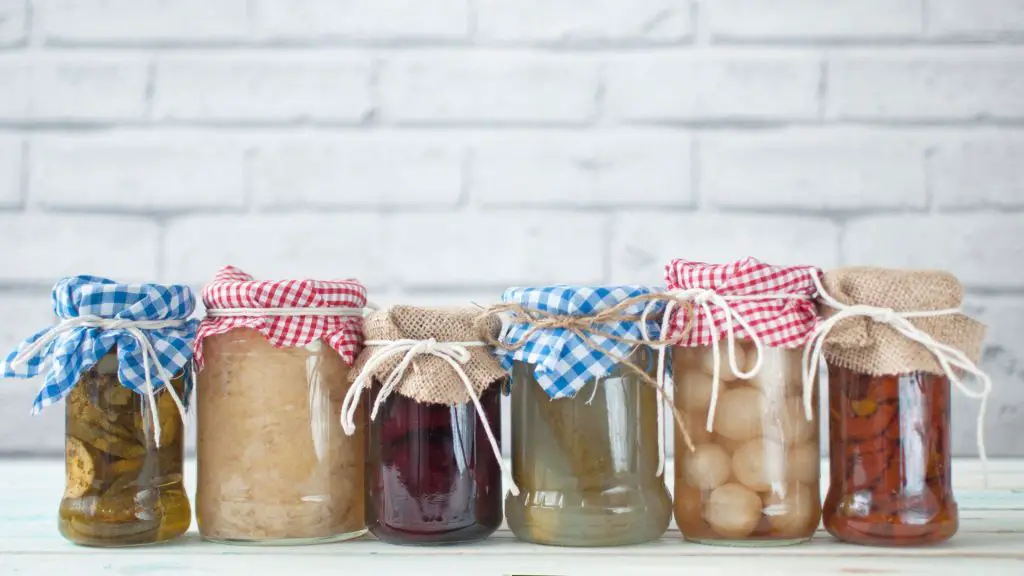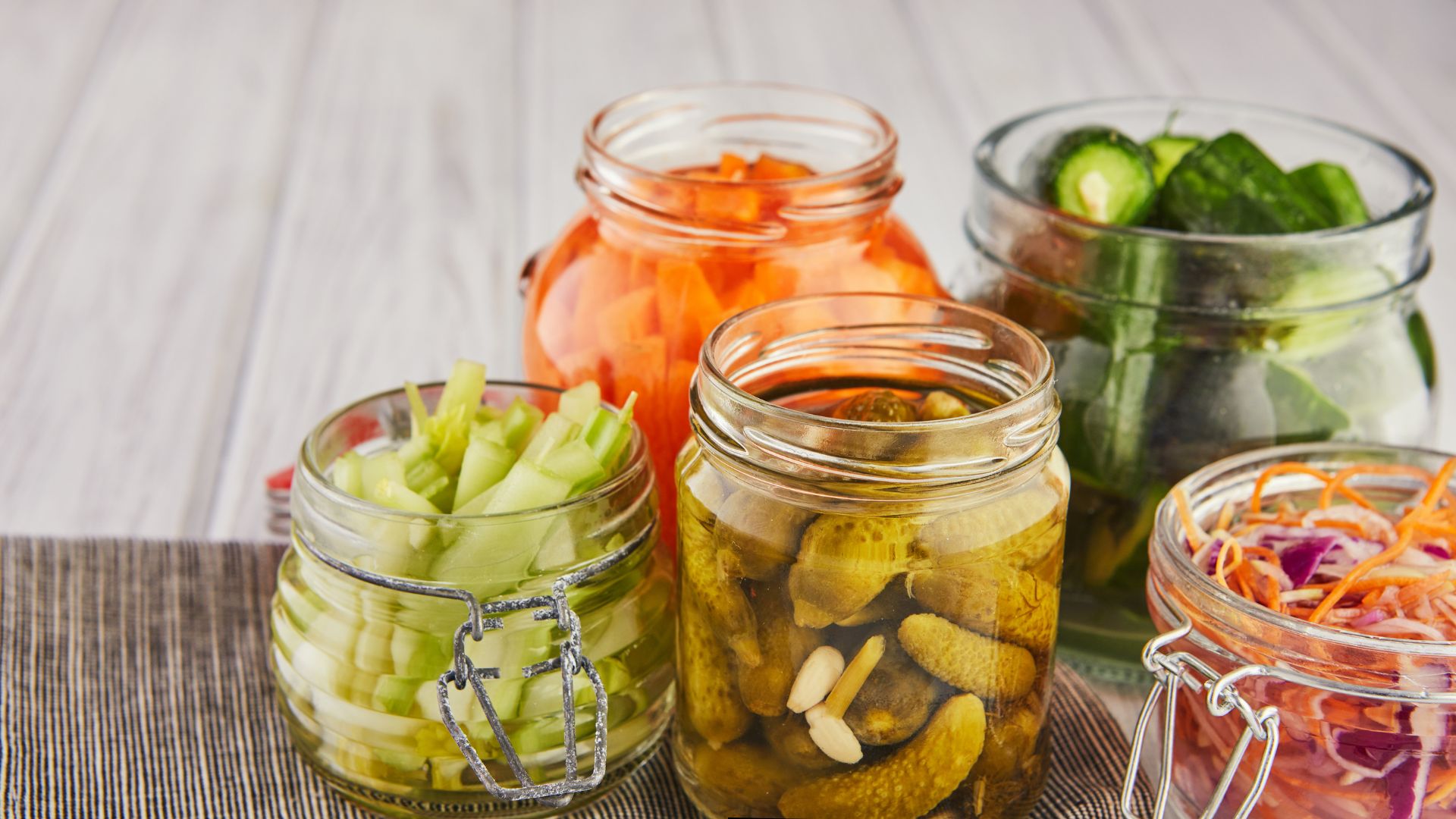Pickled vs fermented? What’s the difference. The debate between pickled and fermented vegetables often arises in the world of preserved foods. Despite their differences, both methods offer unique culinary experiences. But what truly distinguishes pickling from fermentation? Let’s explore the differences between each technique, their respective health benefits, flavor profiles, and how to discern between them.
Pickled vs Fermented: Understanding the Basics

Before delving into their disparities, let’s grasp the fundamental processes of pickling and fermenting. At their core, both methods aim to preserve foods while enhancing flavor. However, their methods and outcomes differ significantly.
Pickling entails submerging vegetables in a brine solution of vinegar, water, salt, and spices. This acidic environment prevents the growth of harmful bacteria, effectively preserving the vegetables. Commonly pickled vegetables include cucumbers (pickles), onions, carrots, and beets. The acidity of pickled vegetables lends them their signature tangy flavor and crisp texture.
In contrast, fermentation harnesses the power of naturally occurring bacteria to transform raw vegetables. During fermentation, beneficial bacteria, such as lactobacilli, consume the sugars present in vegetables, producing lactic acid as a byproduct. This lactic acid preserves the vegetables, imparts complex flavors, and enhances their nutritional profile. Fermented vegetables include sauerkraut, kimchi, and lacto-fermented pickles.
Pickled vs Fermented Vegetables: A Nutritional Comparison

When it comes to nutritional value, fermented vegetables often take the lead. The fermentation process increases the bioavailability of nutrients, making them easier for the body to absorb. Additionally, fermented vegetables are rich in probiotics, which promote gut health and aid digestion. These beneficial bacteria contribute to a robust microbiome, which is linked to improved immune function and overall well-being.
In contrast, while pickled vegetables retain some nutrients, the high acidity of the pickling solution may degrade certain vitamins over time. However, pickled vegetables still offer dietary benefits, such as providing dietary fiber and serving as low-calorie snacks. Ultimately, the nutritional content varies depending on factors like the type of vegetable and the specific pickling or fermenting process employed.
Pickled vs Fermented Health Benefits: A Closer Look

Both pickled and fermented vegetables offer unique health benefits, through different mechanisms. Fermented vegetables, rich in probiotics, support gut health by replenishing beneficial bacteria in the digestive tract. A healthy gut microbiome is associated with improved digestion, better nutrient absorption, and even enhanced mood and mental health.
The fermentation process, which involves the action of beneficial bacteria and yeasts, creates an environment where these microorganisms can thrive and multiply. This results in a food product that not only has an extended shelf life but also a wealth of bioactive compounds beneficial to human health.
Furthermore, the probiotics found in fermented vegetables may help alleviate symptoms of gastrointestinal disorders, such as irritable bowel syndrome (IBS) and inflammatory bowel disease (IBD). These conditions, often characterized by chronic inflammation and discomfort, can see significant improvements with the regular intake of probiotics, which help in balancing the gut flora.
Some studies also suggest that regular consumption of fermented foods could reduce the risk of certain chronic diseases, including cardiovascular disease and type 2 diabetes. The bioactive peptides and antioxidants produced during fermentation contribute to these protective effects by reducing oxidative stress and improving metabolic health.
Additionally, fermented vegetables are a source of vitamins and minerals that are made more bioavailable through the fermentation process. For instance, the vitamin K2 produced during fermentation plays a critical role in bone health and cardiovascular function. Moreover, certain compounds in fermented foods, such as lactic acid, have been shown to enhance the immune system, providing a first line of defense against pathogens.
While pickled vegetables may not boast the same probiotic content as their fermented counterparts, they still offer health benefits. The vinegar used in pickling solutions contains acetic acid, which has been linked to various health advantages.
Acetic acid may aid in blood sugar regulation by improving insulin sensitivity and reducing blood sugar spikes after meals. This can be particularly beneficial for individuals managing diabetes or pre-diabetes. Additionally, acetic acid has been shown to promote weight loss by increasing feelings of fullness and reducing overall calorie intake. It also possesses antimicrobial properties, which can help in preserving the food and preventing the growth of harmful bacteria.
Moreover, pickled vegetables often retain their nutritional content, including essential vitamins and minerals, making them a valuable addition to the diet. The process of pickling can also enhance the flavor profile of vegetables, making them a tasty and enjoyable way to consume a variety of nutrients. In some traditional pickling methods, spices and herbs are added, which can provide additional health benefits due to their antioxidant and anti-inflammatory properties.
So, pickled vs fermented? In summary, both pickled and fermented vegetables contribute to a healthy diet in distinct ways. Fermented vegetables primarily offer probiotic benefits, enhancing gut health and providing bioactive compounds that support overall wellness. Pickled vegetables, while lacking in probiotics, offer the benefits of acetic acid and preserved nutrients, aiding in blood sugar regulation, weight management, and microbial protection. Adding both types into one’s diet can help maximize the health benefits and add a diverse range of flavors and textures to meals.
How to Tell If Pickles Are Fermented

Distinguishing between pickled and fermented vegetables can be challenging, especially since the terms are often used interchangeably. However, there are a few telltale signs that can help you identify fermented pickles:
- Look for Bubbles: Fermentation produces carbon dioxide gas, which creates tiny bubbles in the brine. If you notice bubbles rising to the surface of the liquid, it’s a good indication that the pickles are fermented.
- Check the Label: Some commercial brands explicitly label their products as fermented pickles. Look for terms like “naturally fermented” or “raw fermented” on the packaging.
- Taste Test: Fermented pickles typically have a more complex flavor profile compared to conventionally pickled ones. Look for tanginess, depth of flavor, and a slightly effervescent quality.
- Crunch Factor: Fermented pickles tend to retain a crisp texture, even after prolonged fermentation. If the pickles still have a satisfying crunch, they’re likely fermented.
- Cloudy Brine: While not always present, a cloudy brine is often a sign of fermentation. The presence of lactic acid bacteria can cause the brine to appear slightly cloudy or murky.
Pickled vs Fermented Taste

One of the most significant distinctions between pickled and fermented vegetables lies in their taste profiles. Pickled vegetables typically exhibit a bright, tangy flavor with a pronounced acidity. The vinegar used in pickling solutions imparts a sharpness that cuts through the natural sweetness of the vegetables, resulting in a refreshing and zesty taste.
In contrast, fermented vegetables offer a more complex and nuanced flavor profile. The fermentation process develops layers of flavor, ranging from tangy and savory to slightly sour and umami-rich. Fermented vegetables often boast a depth of flavor that evolves over time, becoming more complex with prolonged fermentation. This depth of flavor is attributed to the action of beneficial bacteria, which produce various compounds during the fermentation process.
Moreover, fermented vegetables may develop unique flavor characteristics depending on the specific vegetables used and the addition of herbs, spices, or other flavorings. For example, kimchi, a Korean staple, combines spicy peppers, garlic, and ginger with fermented cabbage, resulting in a pungent and aromatic dish.
Culinary Uses of Pickled/Fermented Vegetables

Beyond their nutritional benefits, pickled and fermented vegetables offer endless culinary possibilities. In addition to being enjoyed as standalone snacks or side dishes, they can elevate a wide range of dishes, adding depth, acidity, and complexity to recipes.
Pickled vegetables lend themselves well to sandwiches, salads, and charcuterie boards, where their tangy flavor provides a refreshing contrast to rich or savory ingredients. Pickled onions, for example, can add a vibrant burst of flavor to tacos, burgers, or grain bowls, while pickled cucumbers complement the richness of smoked meats and cheeses.
Fermented vegetables, on the other hand, bring a unique umami depth to dishes, along with their probiotic benefits. Sauerkraut, with its tangy flavor and crunchy texture, pairs perfectly with grilled sausages or Reuben sandwiches. Kimchi adds a spicy kick to stir-fries, rice bowls, or noodle soups, infusing the dish with its bold flavor profile.
DIY Homemade Pickling and Fermentation

Interested in experimenting with pickling or fermentation at home? With just a few simple ingredients and some patience, you can create your own delicious pickled and fermented vegetables.
To pickle vegetables, start by preparing a brine solution of vinegar, water, salt, and spices. Slice your chosen vegetables thinly and pack them into sterilized jars. Pour the brine over the vegetables, ensuring they are fully submerged, and seal the jars tightly. Allow the pickles to marinate in the refrigerator for at least 24 hours before enjoying them.
For fermentation, begin by selecting your vegetables and chopping them into bite-sized pieces. Prepare a saltwater brine by dissolving salt in water, ensuring it’s salty enough to inhibit the growth of harmful bacteria but not too salty to kill the beneficial ones. Pack the vegetables into sterilized fermentation jars and cover them with the brine, leaving some headspace at the top. Place fermentation weights on top of the vegetables to keep them submerged and seal the jars with fermentation lids or cloth secured with rubber bands. Allow the vegetables to ferment at room temperature for several days to weeks, depending on your desired level of fermentation.
Conclusion

So pickled vs fermented? In the world of preserved vegetables, pickling and fermentation offer distinct culinary experiences, each with its own set of benefits and flavor profiles. Whether you prefer the tangy crunch of pickles or the complex flavors of fermented veggies, both methods contribute to a rich tapestry of culinary traditions around the world. Understanding the differences between pickling and fermentation allows us to appreciate the diversity of preserved foods and make informed choices based on our preferences and dietary needs. So, the next time you reach for a jar of pickles or fermented vegetables, savor the unique flavors and nutritional benefits they offer.

Usually I do not read article on blogs however I would like to say that this writeup very compelled me to take a look at and do so Your writing taste has been amazed me Thanks quite nice post